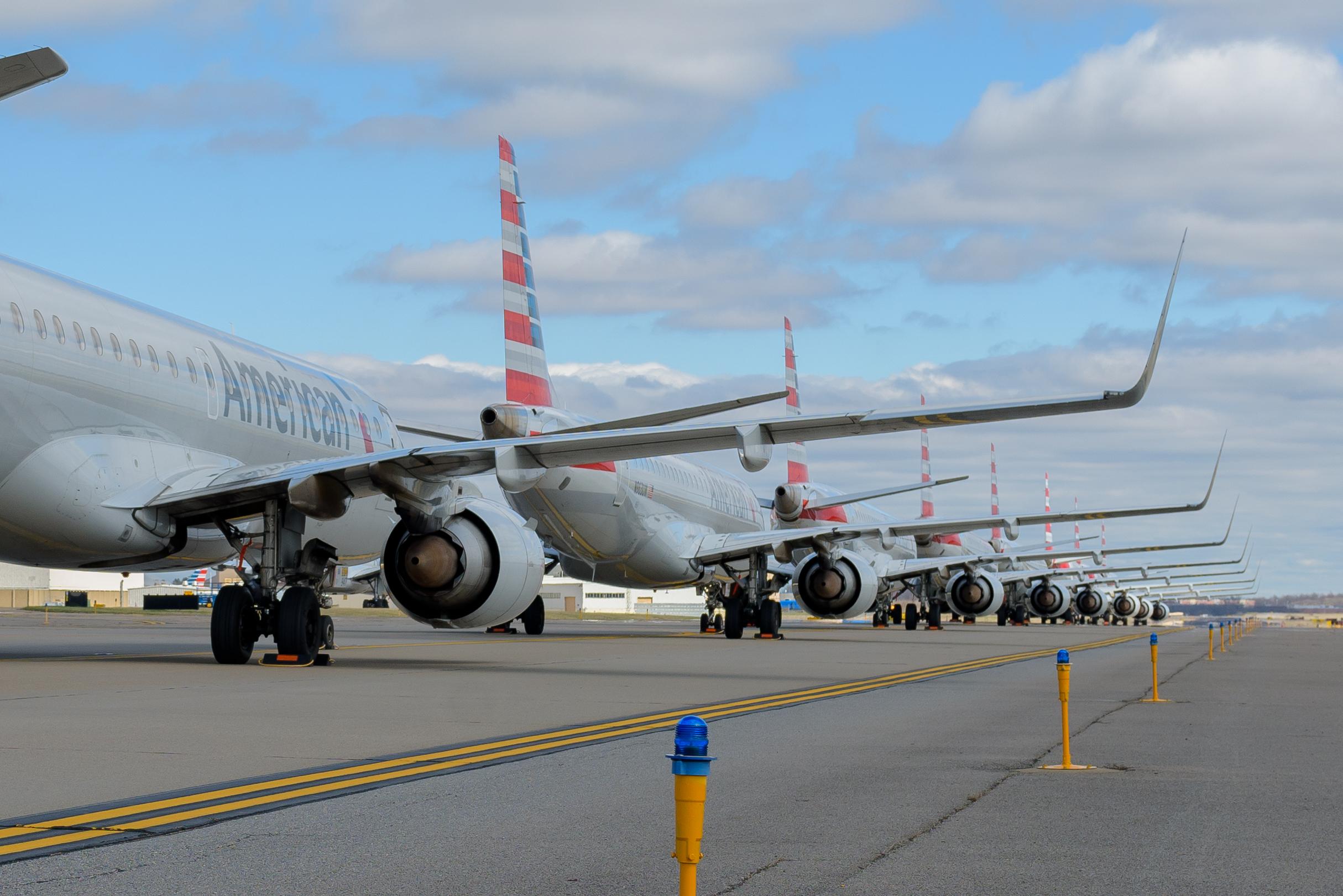
With thousands of commercial aircraft in idle condition or in short- or longer-term storage due to the COVID-19 crisis, airlines and MROs are being forced to adapt their workflows to keep aircraft in healthy condition indefinitely until operations can begin returning to normal.
According to Aviation Week Fleet Data Services, approximately 9,000 aircraft are now in short-term parked status and more than 3,000 aircraft have gone through the process of being put in storage. For American Airlines, which now has approximately 300 idled aircraft parked across its network in Mobile, Alabama; Pittsburgh, Pennsylvania; Tulsa, Oklahoma; and Roswell, New Mexico, the situation builds on what the airline was already dealing concerning grounded Boeing 737 MAX aircraft.
“The MAX has provided kind of an unfortunate training ground for us on aircraft storage,” explains Erik Olund, MD of base maintenance at American Airlines. “Those aircraft have provided a basis for us to get good on how we maintain tasks across the fleet.”
Olund says American has focused heavily on tasks like time-driven inspections, minimum equipment list (MEL) items that need repairs and cleaning, and making sure aircraft are compliant and “ready to go at a moment’s notice” rather than moving forward on maintenance schedules since “now is not the time to go burn capital on things like that.”
“The OEMs are under a lot of pressure with our engineering teams to find the right mix of what is the right interval to do the right maintenance packages when,” Olund says. “It’s a difficult balancing act, but there’s a lot of great cooperation going on.” He adds that technicians who normally work inside the hangar are getting used to taking care of parked aircraft on runways and taxiways.
At HAECO Hong Kong, which is managing fleets for Cathay Pacific and Cathay Dragon, this limited space to park aircraft has become particularly challenging. According to Paul Longhurst, general manager of light maintenance at the MRO, the situation has become a bit of a “logistical nightmare.”
“There’s limited space in Hong Kong to park aircraft and we’ve ended up with aircraft on taxiways. Then we end up with the problem of aircraft blocking aircraft when we have to do periodic maintenance and engine runs,” he says. “We haven’t gotten to the stage yet where we’re parking aircraft for 60 days, but that will come, I think.”
Another challenge Longhurst points to is a lack of maintenance manual guidance for short-term parking or idling. “The maintenance manual right now seems to be tailored for more longer-term mothballing of aircraft, whereas we’re in a situation where different areas of the world may want to reactivate fleets more quickly, they may want to be ready and they may not want to face large reactivation packages just to get aircraft back flying again,” he says.
HAECO Hong Kong has been working with OEMs through Cathay Pacific and Longhurst says some of the parking procedures have been ordered with temporary provisions to make them more workable. The MRO is now looking at 60-day parking procedures and how those can be handled, including periodic idle engine runs.
According to Olund, American Airlines has made decisions on certain aircraft to keep them in active ready status. The airline has built its reactivation plan around requiring three days of around-the-clock work to be able to put aircraft back into service. Which aircraft will be activated first will be driven by the carrier’s schedule planning team.
Longhurst says it will take HAECO Hong Kong approximately 350-600 man-hours to reactivate aircraft that have been parked for a month, since there is “a whole chunk of work that you’re basically doing again that you’ve already done just to get the aircraft flyable as per the aircraft maintenance manual requirements, so it’s going to be a challenge.” He expects Cathay Pacific to reactivate its Airbus A350 fleet first as regional flying opens back up and then begin reactivating A330s and Boeing 777s as other mainline stations resume.
For more information about how American Airlines and HAECO Hong Kong are dealing with parked aircraft and engines, check out the recording of Aviation Week’s Webinar, “MRO And COVID-19: Dealing With Parked Or Idle Aircraft And Engines.”





